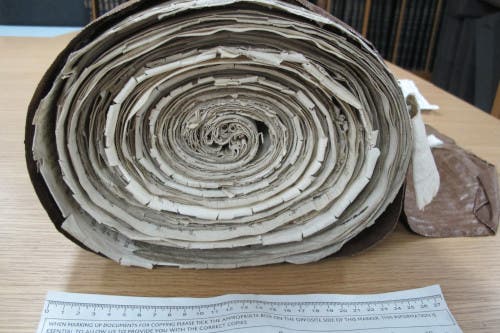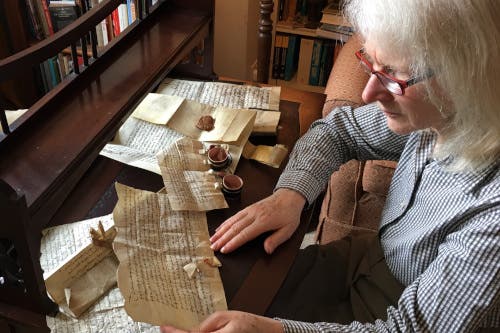In 1496, William Weston, a British merchant from Bristol, set sail for “Terra Nova” — known today as America. The evidence of this journey was hidden in giant parchment rolls and was only identified thanks to ultra-violet light.

The rolled-up parchment that holds news of the reward William Weston received from King Henry VII. Image credits: The National Archives.
When Columbus “discovered” America, news of it spread across Europe. Several explorers tried their skill (and luck) attempting to explore the new continent. William Weston, a Bristol merchant who was probably the first Englishman to set foot on North America, prepared an expedition with the help of King Henry VII just one year after Columbus first landed on mainland South America. Initially, the expedition was undertaken under a royal patent for John Cabot, an Italian navigator and explorer — but what happened after that remained largely unclear.
Evan Jones, a senior lecturer in economic and social history at the University of Bristol, and colleagues analyzed a long parchment roll, created from the skin of 200 sheep. Each segment on the roll was 6.5 feet (2 meters) long and the scroll was so old and deteriorated that the ink was virtually invisible to the naked eye — but not under ultraviolet light.
Margaret Condon, a co-author, painstakingly went through the roll to see what could still be derived from it.
“First time I read the roll, I almost missed it,” Condon said in a statement. “These rolls are beasts to deal with, but also precious and irreplaceable documents. Handling them, it sometimes feels like you’re wrestling, very gently, with an obstreperous [boisterous] baby elephant!”
“Cabot’s voyages have been famous since Elizabethan times and were used to justify England’s later colonisation of North America. But we’ve never known the identity of his English supporters. Until recently, we didn’t even know that there was an expedition in 1499.”
The new research is also remarkable as it confirms two of the extraordinary claims made by a deceased historian, Dr. Alwyn Ruddock of the University of London, who suggested that Cabot explored much of the US east coast, and that a group of Italian friars, who accompanied Cabot’s 1498 expedition, went on to establish Europe’s first Christian colony and church in North America.










